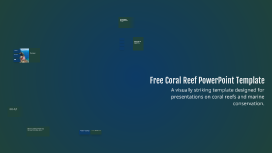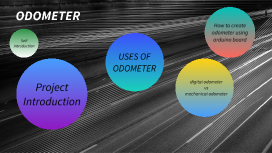Ant Odometer
Transcript: Experimental situation and procedures At the field site near Maharès, Tunisia (34°30'N, 19°29'E), large and viable nests of Cataglyphis fortis Forel 1902 (Wehner, 1983) were selected for experiments. The experimental season lasted from the middle of June to the start of September in 2004 and 2005. The ants were trained to walk a distance of 10 m in a linear alloy channel from their nest entrance to a feeder established due south (Fig. 1). The channel was 7 cm wide and the walls 7 cm high, such that the ants experienced a strip-like view of the sky of about 45° to almost 60°, depending on the height of the ant's eyes above ground and its actual position on the channel floor, to read the skylight pattern and compass information. To provide traction for walking, the channel floor was coated with fine grey sand. This sand coating reliably prevented slipping of the ants, as judged from high-speed video recordings (see Fig. 3). This held in particular after removal of the ants' tarsi, and the traction devices associated with them, in the course of the operation procedures below. Grain size of the sand ranged between 0.2 and 0.4 mm, to minimise visual orientation cues such as optic flow. The channel walls were painted with matt grey varnish to provide a featureless environment, and avoid distracting reflections. Summary Experimental situation and procedures At the field site near Maharès, Tunisia (34°30'N, 19°29'E), large and viable nests of Cataglyphis fortis Forel 1902 (Wehner, 1983) were selected for experiments. The experimental season lasted from the middle of June to the start of September in 2004 and 2005. The ants were trained to walk a distance of 10 m in a linear alloy channel from their nest entrance to a feeder established due south (Fig. 1). The channel was 7 cm wide and the walls 7 cm high, such that the ants experienced a strip-like view of the sky of about 45° to almost 60°, depending on the height of the ant's eyes above ground and its actual position on the channel floor, to read the skylight pattern and compass information. To provide traction for walking, the channel floor was coated with fine grey sand. This sand coating reliably prevented slipping of the ants, as judged from high-speed video recordings (see Fig. 3). This held in particular after removal of the ants' tarsi, and the traction devices associated with them, in the course of the operation procedures below. Grain size of the sand ranged between 0.2 and 0.4 mm, to minimise visual orientation cues such as optic flow. The channel walls were painted with matt grey varnish to provide a featureless environment, and avoid distracting reflections. Experimental situation and procedures At the field site near Maharès, Tunisia (34°30'N, 19°29'E), large and viable nests of Cataglyphis fortis Forel 1902 (Wehner, 1983) were selected for experiments. The experimental season lasted from the middle of June to the start of September in 2004 and 2005. The ants were trained to walk a distance of 10 m in a linear alloy channel from their nest entrance to a feeder established due south (Fig. 1). The channel was 7 cm wide and the walls 7 cm high, such that the ants experienced a strip-like view of the sky of about 45° to almost 60°, depending on the height of the ant's eyes above ground and its actual position on the channel floor, to read the skylight pattern and compass information. To provide traction for walking, the channel floor was coated with fine grey sand. This sand coating reliably prevented slipping of the ants, as judged from high-speed video recordings (see Fig. 3). This held in particular after removal of the ants' tarsi, and the traction devices associated with them, in the course of the operation procedures below. Grain size of the sand ranged between 0.2 and 0.4 mm, to minimise visual orientation cues such as optic flow. The channel walls were painted with matt grey varnish to provide a featureless environment, and avoid distracting reflections. PubMed.gov The Journal Of Experimental Biology Google.com Statistical tests Only nonparametric tests were used to compare experimental groups in the field experiments, according to the sample sizes of N=25 in each group. In Test 1 and Test 2 the groups that had received different treatments (stilts, normal, stumps I and stumps II) consisted of different sets of animals and thus are independent, which allowed us to use a Kruskal-Wallis ANOVA on ranks to compare them. For pair-wise multiple comparison of the treatment groups Dunn's method was used. From the high-speed film analysis, linear correlations of the distributions of walking parameters were calculated for each treatment group. Correlation coefficients, regression coefficients and axis intercepts were tested with student's t-test (for difference from 0, and for differences against each other). Statistical methods are described in detail in Sokal and Rohlf (Sokal and Rohlf, 1995). Double click anywhere & add an idea Desert ants, Cataglyphis,

















